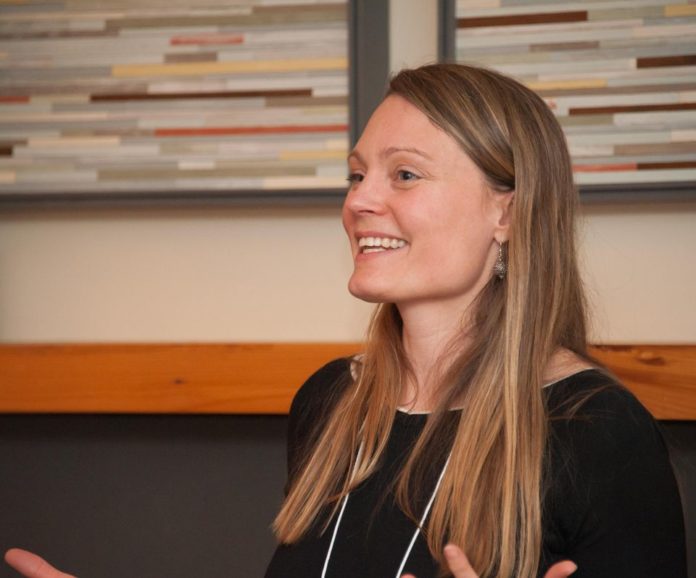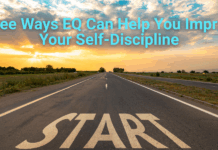
What if you could retrain your brain to approach problems differently?
As leaders, thinking ahead is a huge part of the job. Yet it is often focusing too much on what’s in front of us instead of where we are that leads to missteps and frustrations. So how can you begin to stay in the present moment, and lead from within?
Gretchen Steidle is the Founder and President of Global Grassroots, an international organization that leads a social venture incubator and mindful leadership program for women and girls in East Africa. Among many other awards, Steidle has been named a CNN Hero in Haiti for her work after the devastating earthquake in 2010. Her new book is Leading from Within: Conscious Social Change and Mindfulness for Social Innovation.
I recently interviewed Steidle for the LEADx Leadership Podcast, where we discussed the advantages to being present, and her tips for avoiding knee-jerk reactions. (The interview below has been lightly edited for space and clarity.)
Kevin Kruse: What's the big idea of your book?
Gretchen Steidle: What I call “conscious social change” is actually a design tool that we should be using to solve problems. Mindfulness is the process of developing your self awareness and being able to be more present every day. This goes beyond our own wellbeing, our sense of calm, or helping protect ourselves from burnout.
Whether you're doing that as a social entrepreneur, creating something new to address intractable issues around the world, or you're doing this within your organization or your community. Even within any sort of relationships, mindfulness is a form of brain training and it makes us better able to manage our relationships—to communicate, for example, and handle conflict with less anger. It reduces stress, it allows us to have more positive emotions. There’s a real benefit to the self, but it also helps us understand problems in a new way.
The way we diagnose issues, the way listen to people, the way we drop our ego and our agenda to really understand what's working, what's not working, and what people need so that we, instead of imposing ourselves or demonizing our opposition and creating more divisive tactics just to win—which we see all the times in politics—we also look at being more inclusive, more responsive, and more collaborative. At the end of the day the kind of solutions we result in are more sustainable because it involves everyone's input and ownership. That results in longer term real transformation.
Kruse: What do you mean when you say “lead from within”?
Steidle: I would say a conscious leader is someone who works very differently from the conventional paradigm where we try to get people to comply with what we want with incentives or punitive measures. We're telling or forcing people to change. A conscious leader who leads from within starts first, as I've just been describing, by understanding the circumstances around them and change from the inside out.
As we come to understand ourselves with much greater clarity and self awareness, we have deeper understanding and compassion for others. From there, we then engage with people and our relationships we build from a very different kind of awareness and quality. The quality of attention defines the quality of our relationships. We too are able to connect with people more deeply.
Leading from within also involves us finding and leveraging our own gifts and purpose that brings us meaning. When we do that for ourselves, we are more likely to seek to support others in doing that for them too, rather than just seeking to find people to attend to our own agenda.
By doing so, we inspire people. We inspire people to step into their highest capacities and to contribute in ways that are meaningful to a common vision or a greater whole. Conscious change leaders who lead from within come into their work with others with a greater humility, and greater curiosity, and deeper listening skills than most of us do and attempt to live with that kind of integrity and engagement with world that is inner driven and is more other focused.
Kruse: Give us some practical tips from your book that we could use today.
Steidle: If everyone is able to start by giving themselves, instead of hitting a snooze button or taking a coffee break, just take a moment to spend time in solitude. Whether that's going for a walk or sitting on your own with your eyes closed and just watching your breath. Just paying attention with awareness to how you breathe.
That is the start of a mindfulness practice or meditation that will begin to train your brain to realize all of these many different kinds of benefits we've been talking about. There's numerous apps and I even have some guided meditations on my website, conscioussocialchange.org, where you can find some practices to help guide you in this. That alone will get you started in this process of being a more mindful leader.
The second thing is to take three breaths before you respond, especially in circumstances where you feel really triggered. Annoyed, frustrated, irritated and your inclination is to react. A very quick story of how that makes a major difference involves a woman I was working with in Rwanda who I taught this skill to. She came back to me at one point and she said, “The other day I went home and my kids had totally destroyed my home and I was so angry. I usually just spank my children, but today I remembered what you said and I took three breaths. I realized, I don't want to hit my kids. I just want them to clean up the house, so I was able to explain to them this and they listened to me for the first time. I was so profoundly transformed by this that it's made me think a lot more about the issue that I'm working on.”
__
Staying in the present moment can be the key to addressing issues that we may otherwise overlook. Gretchen Steidle’s approach to changing within before effecting positive change in those around us is all based on becoming more self-aware and in the moment. Take a beat today to breathe and check-in with yourself.





